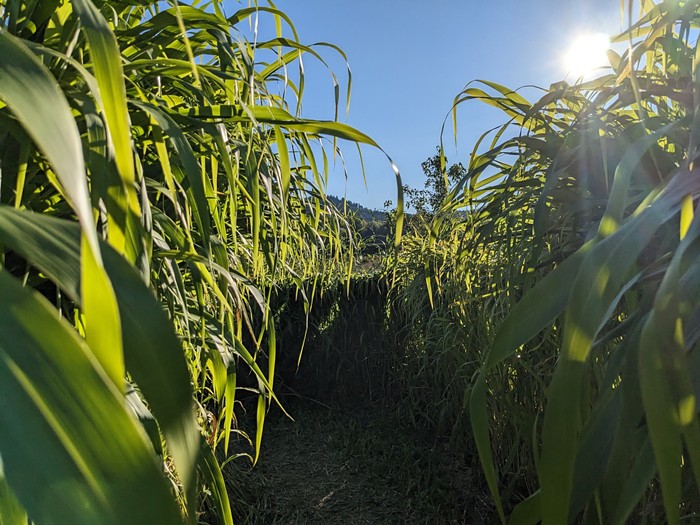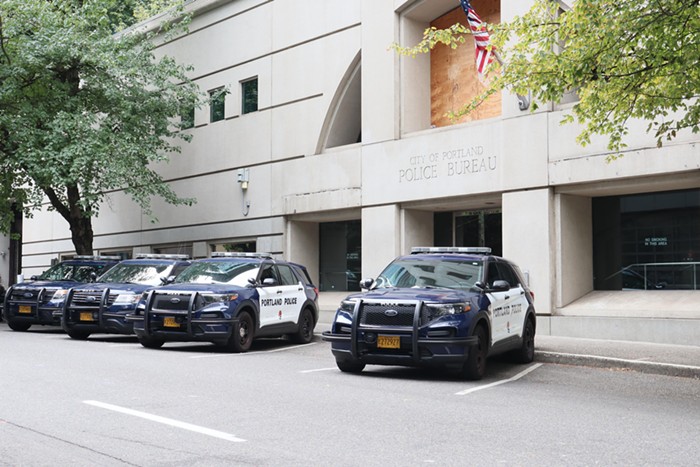Spring Forward
The Sun is Returning. Put Down Your Dystopian Literature and Get Out There with Our Guide to Arts and Culture
To the Shire!
Appreciating John Yeon, Portland’s Unsung Hero of Architecture
In The Black, Intisar Abioto Documents Connection, Community, and Place
The Black Portlanders Photographer Traces Black Roots in Portland and Beyond
The Shirley Jackson Project is Like a Collection of Ghost Stories
Portland Comic Artists Share Their Passion for Shirley Jackson, Queen of Gloom
Inside Stream PDX’s Mobile Recording Studio
How an Airstream Trailer on NE MLK is Making Podcasting More Accessible
Rethinking the Canon
Portland Writer/Artist Dao Strom Discusses a New Local Effort to Showcase Authors of Color
Laura E. Hall, Escape Artist
Get Trapped With Portland’s Leading Escape Room Designer
Move Over, Maru. Make Way, Lil Bub!
It’s Oregon Cats’ Time to Shine at a New Cat Video Festival
Compared to his contemporaries like Walter Gropius and Ludwig Mies van der Rohe, architect John Yeon’s legacy is a modest one. He wasn’t responsible for any splashy skyscrapers, modernist churches, or enormous public buildings. (The 15-story Yeon Building on SW 5th is named after his father, Jean, who paid for its construction in 1911.) In fact, a number of the projects he did design—like the Rose Building that now sits in Tom McCall Waterfront Park and the Shaw House in Lake Oswego—have been radically altered from their original form.
In spite of that, the impact of Yeon’s life and work has slowly resonated throughout the Northwest and beyond during his lifetime. And it will be felt even more strongly this spring and summer when the Portland Art Museum opens its upcoming exhibit Quest For Beauty: The Architecture, Landscapes, and Collections of John Yeon.
Curated by Randy Gragg, executive director of the University of Oregon’s Yeon Center for Architecture and the Landscape, the exhibition will be a multifaceted affair. There will be plenty of pictures and models of the buildings and homes that Yeon designed, as well as pieces from his art collection. But there will be a special focus on the work the architect did to preserve the natural beauty of the Northwest.

“Here’s this man who was sort of tridextrous, to coin a word,” Gragg says. “He had an equal interest in landscape, architecture, and collecting art. You can’t find many architects that were interested in landscape, and not that many have been conservationists or have this deep knowledge and interest in Asian and European decorative art. It’s hard to pin him down.”
One of Yeon’s most remarkable achievements is how he was able to fuse those three interests. Two of his houses that have been preserved—the Watzek House and the Cottrell House, both in the West Hills—somehow simultaneously stand out from and sit in harmony with their natural surroundings. The steep, sharp angles of the exteriors aim to mimic the peak of Mount Hood while also anticipating the annual rainy season. The interiors are beautiful and utilitarian, tastefully decorated with Japanese prints and mid-century furniture, with plenty of space for entertaining and working. These were houses to be lived in as well as admired.

Those houses brought Yeon some well-deserved international attention, as photos of the Watzek property appeared in an exhibition at the Museum of Modern Art. But his name faded in the world of architecture due to the scarcity of his projects were built. Here in the Northwest, Yeon is likely known less for his design work than for his efforts to protect the outdoors.
Motivated by the devastation wrought by logging operations in the region, Yeon bought a small plot of land on the coast near Cannon Beach that he preserved and deeded to the state of Oregon. He also advocated for the creation of Olympic National Park in Washington State, and, in 1965, purchased what he dubbed “The Shire,” a 75-acre area near the Columbia River Gorge that he helped sculpt into an awe-inspiring pastoral utopia. All of this will be on display in the upcoming exhibit, thanks to photographs and a time-lapse video of the seasons changing at the Shire.

Devoting an entire exhibition to someone whose architectural output was comparatively meager may strike some as unusual. Yeon himself would likely view this level of attention as rather odd, as he seemed to spend his entire career accepting the attention his work received from the likes of MoMA while also feeling rather ambivalent towards it. At the very least, the architect would have some very strong opinions about how the exhibit was set up.
“He would become really frustrated with clients, because many of them had different ideas for their houses,” says Gragg. “It often came down to deciding either not to practice his craft and dealing with frustrations over not being able to make the designs he wanted to build. He was so meticulous that even when there were publications featuring his work, he would write them and argue with them about the photo selection and their design choices.”













